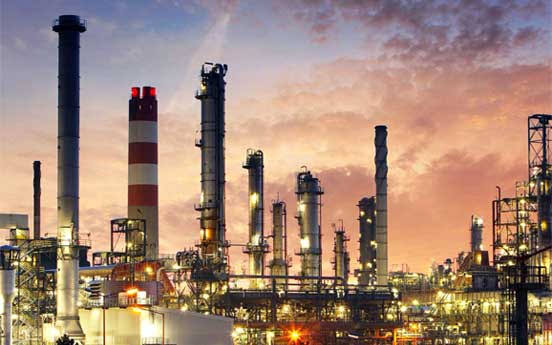Enhancing Industrial Gas Systems Through Precision Engineering and Component Selection

The demand for accurate and efficient gas control systems continues to rise across numerous industries, including biotechnology, chemical processing, manufacturing, and research laboratories. As processes grow more complex and safety standards tighten, the need for high-performance gas system components becomes increasingly important. From pressure regulation to contamination control, each component plays a critical role.
High Pressure Gas Regulators: The Backbone of Safe Gas Control
Every high-performance gas system begins with a high pressure gas regulator. These devices are engineered to manage gas flow from high-pressure sources, such as compressed gas cylinders or bulk tanks, reducing the pressure to a safe and usable level for downstream equipment.
The design of a high pressure gas regulator is crucial. High-strength materials, precise diaphragm sensitivity, and durable seals are key to ensuring consistent performance under varying pressure conditions. Industrial applications often operate in demanding environments where reliability is not optional. A malfunctioning regulator can not only halt production but also create significant safety risks.
Advanced regulators are also designed with pressure relief features and internal filters to improve longevity and operational integrity. Whether the system is used in welding, laser cutting, or a medical facility, selecting the correct regulator model tailored to the specific pressure and gas type is essential for performance and safety.
The Growing Role of Specialty Gas Regulators
In environments where standard gas regulators may not suffice—such as those dealing with reactive, corrosive, or ultra-high purity gases—specialty gas regulators become essential. These regulators are specifically engineered to handle the unique properties of specialty gases, ensuring that their chemical composition remains intact from the source to the point of use.
Specialty gas regulators suppliers offer tailored solutions for applications ranging from environmental monitoring to analytical instrumentation and cleanroom operations. These regulators are often constructed from materials like stainless steel or Monel to prevent corrosion, and they include design features that minimize dead volume and gas entrapment.
Another factor that sets specialty regulators apart is their stringent manufacturing and testing processes. Suppliers often provide certificates of conformity, test data, and cleaning procedures compliant with international standards such as ISO 8573 or CGA guidelines. Working with a trusted supplier ensures that you’re not only receiving a reliable product but also gaining access to technical support and application expertise.
The Critical Function of High Purity Valves and Fittings
Precision gas systems demand more than just regulators. High purity valves and fittings are indispensable for maintaining the cleanliness and integrity of the gas flow path. These components are used to connect and control gas flow between different segments of a gas distribution system, and any contamination or leak at this stage can compromise the entire operation.
High purity valves and fittings are particularly important in industries like semiconductor manufacturing, pharmaceuticals, and laboratory analysis. In such settings, even trace contamination can ruin batches or distort experimental results. As a result, these components are made with ultra-clean materials, smooth internal finishes, and minimal internal dead space.
Fittings must also be compatible with the types of gases being used. For example, inert gas applications may allow for a wider selection of materials, while reactive or flammable gases require fittings made from corrosion-resistant metals and precision-sealed joints.
Reliable performance also depends on proper installation and maintenance. Even the best high purity valves and fittings can underperform if they are improperly torqued, mismatched in size, or not cleaned before assembly.
Integrating Components for Complete System Performance
Gas systems are rarely about a single component. Instead, they involve a network of regulators, valves, tubing, filters, and sensors—all working in concert to ensure the right gas is delivered at the right pressure, purity, and volume. Effective integration of these components is what transforms a basic gas delivery setup into a high-efficiency system.
Successful system integration begins with proper planning. This includes calculating expected flow rates, identifying required pressure ranges, and selecting materials compatible with the gas types in use. Once this groundwork is laid, the selection of individual components—especially the high pressure gas regulator and fittings—becomes more precise.
Many specialty gas regulators suppliers offer system design assistance, helping clients specify every detail from regulator type to fitting configuration. Their input can be crucial in designing systems that are scalable, maintainable, and compliant with safety codes.
Safety and Compliance in Gas Delivery Systems
Compliance with safety standards is a non-negotiable element of gas system design. Components should meet or exceed industry regulations related to pressure containment, leak resistance, and material compatibility. Safety isn’t just about preventing accidents; it’s also about ensuring business continuity and regulatory compliance.
Routine inspection and preventive maintenance are essential for long-term performance. Regulators and valves should be checked for leaks, pressure drift, and wear. Cleaning and purging procedures must also be followed to maintain purity, especially when switching gas types or refilling systems.
Vist for more:https://www.jewellok.com/
Conclusion
In today’s industrial landscape, precise control over gas delivery is a cornerstone of efficient and safe operations. Selecting the appropriate high pressure gas regulator, sourcing equipment from reliable specialty gas regulators suppliers, and ensuring the integration of high purity valves and fittings can significantly impact the effectiveness of your system.



